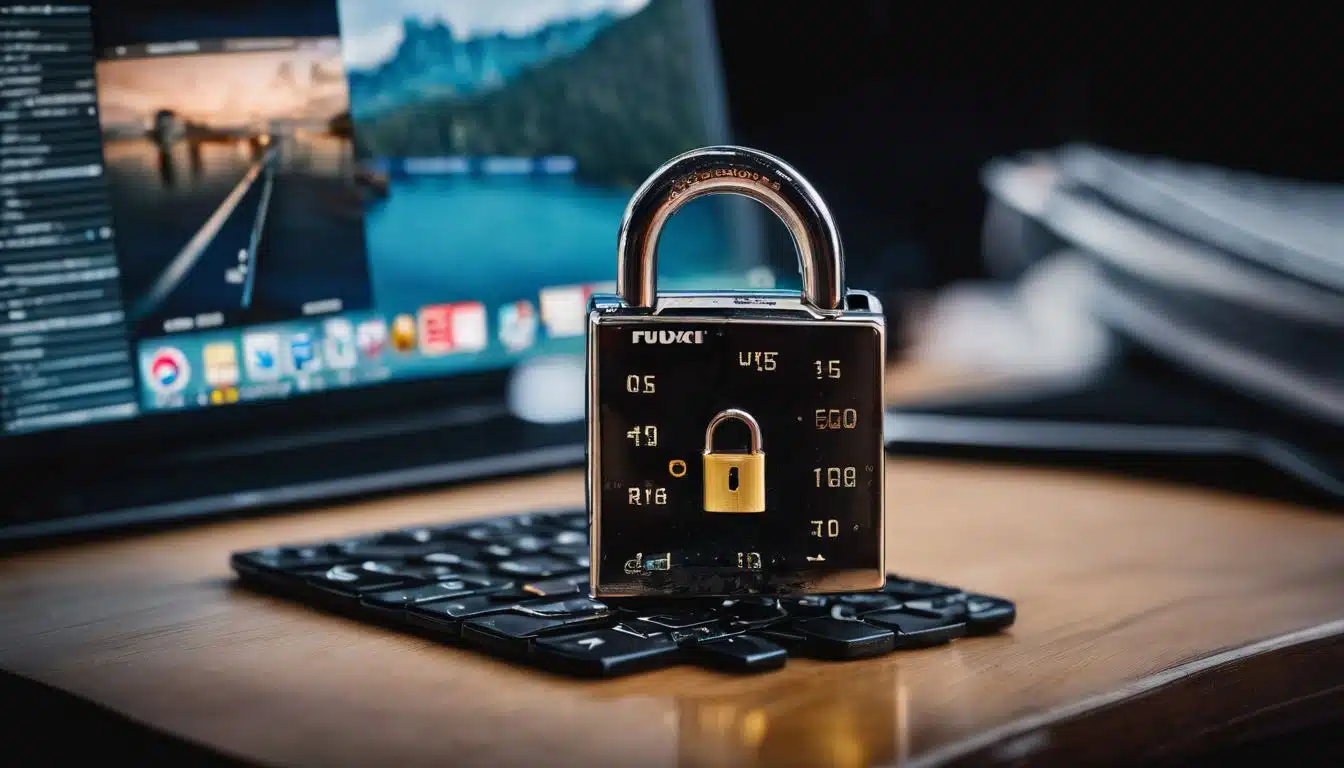Online identity theft is becoming a growing problem, affecting millions of people each year. In 2021, over 1.4 million cases of identity fraud were reported in the U.S., up nearly 50% from 2020. (Source: Javelin Strategy & Research) In fact, your personal or financial information can be stolen and misused in numerous alarming ways. Medical identity theft affected about 2.3 million victims in 2021, with total losses around $52 billion. (Source: AARP)
This blog post aims to help you recognize the signs of online identity theft and guides you on how to respond effectively when it happens. Let’s dive in to protect ourselves from this digital menace!
Key Takeaways
- Online identity theft is a crime where someone steals your personal information like name and bank details without your permission. They can do things like use your credit card or take out loans in your name.
- There are different types of identity theft, including credit, child, synthetic, taxpayer, medical, account takeover, and criminal identity theft. Each type has its own signs and consequences.
- To protect yourself from identity theft, safeguard your Social Security number by not sharing it unless necessary. Use strong passwords and add an authentication step for online accounts. Regularly check your credit reports to spot any suspicious activity.
- If you suspect identity theft, report it to the police and FTC immediately. Contact the credit bureaus to place a fraud alert on affected accounts. Notify financial institutions about the fraud and keep records of all communications for future reference.
Responding to Online Identity Theft

Online identity theft is a crime in which someone wrongfully obtains and uses another person’s personal information, often for financial gain or to commit fraud.
What is Online identity theft?
Online identity theft is a big crime. People steal your private information like your name, home address, or bank account numbers. They use this data without you saying yes. Then they can do things like buy stuff with your credit card or take out loans in your name.
Some folks might even pretend to be you! It’s wrong and it can hurt you in many ways.
Different types of Online Identity Theft
Identity theft comes in many forms. Here is a list to help you understand:
- Credit identity theft: This is when someone uses your personal information to open new credit cards or get loans.
- Child identity theft: Scammers use a child’s Social Security number to commit fraud.
- Synthetic identity theft: The thief combines real and fake data to make a new person.
- Taxpayer identity theft: This is when cheats file tax returns under your name to steal tax refunds.
- Medical identity theft: Some bad people use others’ health insurance for their own medical care.
- Account takeover: Cheats will hack into your accounts and take over them.
- Criminal identity theft: This can happen if someone pretends to be you when they are in trouble with the law.
| Type of Online Identity Theft | Signs |
|---|---|
| Credit Card Fraud | Unauthorized charges on your accounts, bills for items you didn’t buy, denial for new credit cards. |
| Medical Identity Theft | Receiving bills for medical services you didn’t use, finding medical records for procedures you didn’t have. |
| Social Security Fraud | Tax issues like unreported income, denied benefits, receiving documents about wages you didn’t earn. |
| Driver’s License Identity Theft | Notices of tickets or violations you didn’t commit, DMV records showing duplicates of your license. |
Recognizing the Signs of Online Identity Theft

Identity theft can manifest in various ways, including credit identity theft, child identity theft, synthetic identity theft, taxpayer identity theft, medical identity theft, account takeover, and criminal identity theft.
Credit identity theft
Credit online identity theft is a bad act. People steal your private or money details like credit card numbers. They use this info to buy stuff or start new credit cards in your name. To fight this, you need to keep your info safe and tear up important papers right.
You should also check your bills, bank accounts, and credit reports often for any odd charges. If a crook gets hold of your card number, the card company will give you a new one with different numbers.
Child identity theft
Bad people steal kids’ personal details too. This is child online identity theft. They use this data for their gain. For a long time, no one may know about it as children don’t often need to check credit reports.
Sometimes you get signs of it happening. You might see bills or credit card offers in your child’s name that they did not ask for. Or maybe calls about debts the kid does not have are coming in.
In some cases, useful services like government benefits get denied due to this issue.
Child identity theft can hurt a kid’s financial future before they even grow up fully! It can mess up their ability to borrow money later on by damaging their credit history early on.
Parents and those looking after kids have an important job here – protect the little ones from these threats! Keep all important papers safe and secure that carry details of your child’s information like Social Security number or medical insurance account numbers etcetera.
Also, help them learn how things work online so they know how to be safe there.
Synthetic identity theft
Synthetic identity theft is a type of online identity theft where scammers combine real and fake information to create new identities. They use this new identity to open credit accounts or apply for loans in the victim’s name.
What makes synthetic identity theft tricky is that the stolen information doesn’t match the victim’s actual identity, making it harder to detect. Victims may only discover it when they see unfamiliar credit accounts or loans on their records.
Synthetic identity theft can lead to significant financial losses for both individuals and businesses. To protect yourself, be careful with your personal information and use strong passwords when creating online accounts.
Taxpayer Online identity theft
Taxpayer identity theft happens when someone steals your personal and financial information to file fraudulent tax returns. They use your name, address, and Social Security number to claim tax refunds in your name.
It’s important to recognize the signs of taxpayer identity theft, such as receiving notifications about duplicate tax returns or unexpected changes in tax refunds. If you suspect this type of identity theft, take immediate action to report it and prevent further damage.
Medical Online identity theft
Medical identity theft is a type of identity theft where someone uses another person’s medical insurance information without their permission. This can happen when personal information, like medical insurance account numbers, is stolen.
The stolen information can be used to receive healthcare services, which can lead to incorrect medical decisions and the mixing of medical histories. It’s important to protect your personal information and report any suspected cases of medical identity theft promptly.
Account takeover
Account takeover is a common issue in online identity theft and fraud. It happens when someone gains unauthorized access to your account, such as your bank or credit card account. They can then make transactions or changes without your knowledge or consent.
This can be financially damaging and cause a lot of stress. It’s important to monitor your accounts regularly for any suspicious activity and report it immediately if you suspect an account takeover.
Credit card issuers often provide new cards with different numbers if there is a breach, but resolving issues related to taxpayer identity theft or stolen benefits may take longer.
Criminal Online identity theft
Criminal identity theft happens when someone uses another person’s identity during an arrest or investigation. This form of identity theft involves stealing personal and financial information like name, address, social security number, credit card or bank account numbers, and medical insurance account numbers.
The thieves can then use this stolen information to make purchases, open new credit cards, or even impersonate the victim. It’s important for individuals to protect themselves by securing their personal information and regularly monitoring their accounts and credit reports to help prevent criminal identity theft.
Preventive Measures to Avoid Online Identity Theft

Safeguard your personal information, use strong passwords, and regularly check your credit reports to protect yourself from identity theft. Read more to learn how you can stay safe online.
Safeguard your Social Security number
One of the most important steps you can take to protect yourself from identity theft is to safeguard your Social Security number. Your Social Security number is a key piece of information that identity thieves look for.
By keeping it safe and secure, you make it harder for someone to use your personal information for fraudulent purposes. Remember, never share your Social Security number unless absolutely necessary and with trusted sources.
Be cautious when providing this information online or over the phone, especially if you didn’t initiate the contact. Always question why an organization needs this sensitive information and consider alternative methods of identification if possible.
Use strong passwords and add an authentication step
Using strong passwords and adding an authentication step are important steps in protecting yourself from online identity theft and fraud. A strong password should be a combination of letters, numbers, and symbols that is difficult for others to guess.
It’s also recommended to change your passwords regularly and not use the same password for multiple accounts. Adding an authentication step, such as two-factor authentication, provides an extra layer of security by requiring you to verify your identity using a separate device or code.
These measures help prevent unauthorized access to your personal information and reduce the risk of identity theft.
Check your credit reports regularly
Regularly checking your credit reports is an important step in protecting yourself against online identity theft. Credit reports contain information about your credit history, such as loans, credit cards, and other accounts that are in your name.
By reviewing your credit reports on a regular basis, you can spot any suspicious activity or unauthorized accounts that may indicate identity theft. This allows you to take prompt action and report the issue to the authorities.
Checking your credit reports also helps ensure the accuracy of your credit information and allows you to address any errors or discrepancies promptly. So make it a habit to review your credit reports regularly to stay informed and safeguard yourself against identity theft.
Protect your mobile devices
Protecting your mobile devices from online identity theft is crucial in preventing identity theft and fraud. Here are some important steps to take: First, make sure to use a strong password or passcode on your device.
Additionally, consider enabling biometric authentication like fingerprint or face recognition for added security. Keep your device’s operating system and apps updated regularly to protect against known vulnerabilities.
It’s also important to be cautious when connecting to public Wi-Fi networks, as they may not be secure. Avoid clicking on suspicious links or downloading apps from unknown sources, as these can contain malware that can compromise your personal information.
Responding to Online Identity Theft

Report identity theft immediately to the appropriate authorities and follow their instructions for recovery.
How to report identity theft
- File a report with your local police department or law enforcement agency. This is one of the first steps in reporting identity theft.
- Report the identity theft to the Federal Trade Commission (FTC) through their website or by calling their toll-free hotline. The FTC provides an Identity Theft Affidavit that you can fill out with detailed information about the theft.
- Contact the credit bureaus (Equifax, Experian, and TransUnion) to report the identity theft and request that they place a fraud alert on your affected accounts.
- Reach out to the financial institutions or creditors where fraudulent activity took place. Inform them about the identity theft and provide any necessary documentation or evidence.
- Keep copies of all communications and documentation related to the identity theft for future reference.
Remember, it’s important to act quickly when reporting identity theft to minimize the damage done. By following these steps, you can take proactive measures to protect yourself and begin the process of resolving any issues caused by the theft.
What happens when you report identity theft?
Reporting identity theft is an important step towards resolving the situation and protecting your personal information. When you report identity theft, it initiates an investigation and starts the process of restoring your identity and good name.
You can report identity theft through the website identitytheft.gov, which is run by the Federal Trade Commission. Once reported, law enforcement agencies may get involved to catch the criminals responsible for stealing your information.
Additionally, reporting helps create a record of the crime, making it easier for you to dispute any fraudulent charges or accounts that were opened in your name. Remember to provide as much detail as possible when reporting so that authorities can take appropriate action.
Conclusion
Identity theft and fraud are serious threats in today’s digital world. By understanding the signs of identity theft and taking preventive measures, we can protect ourselves from becoming victims.
If you suspect that your identity has been stolen, it is important to report it immediately and take steps to recover your identity. Stay vigilant, keep your personal information secure, and regularly monitor your accounts for any suspicious activity.
With these precautions, we can stay one step ahead of online scammers and protect ourselves from identity theft.
FAQs
1. What is online Identity Theft and Fraud?
Online identity theft and fraud is a scam where people steal your personal data to misuse it for illegal activities like getting loans or using your credit.
2. How can I protect myself from online scams?
You can keep safe by shopping on secure web sites, use multi-factor authentication, be careful with mailboxes, shred papers with personal details and not sharing PIN numbers to protect personal information.
3. Can services help me prevent identity theft?
Credit monitoring services like NerdWallet, LifeLock or IDShield can alert you about changes in your credit report while USPS Informed Delivery helps prevent mailbox theft. Also having security software keeps computers safe.
4. Are there ways to tell if I am at risk of being scammed?
Yes! Warning signs include unwanted calls, emails or texts asking for details like social security benefits number, address or bank accounts which may lead to tax identity theft or medicare card fraud.
5.What actions should I take when my identity has been stolen?
If you face scams against immigrants older adults small businesses etc.,reporting the fraud through FTC.gov will start an investigation towards possible recovery and restoration of lost assets by taking protection measures
6.How does healthcare relate to online Identity Theft and Fraud?
Healthcare Identity Theft occurs when thieves use someone’s name plus their health insurance details without consent often targeting Medicaid Benefits Medicare benefits causing health care fraud.

